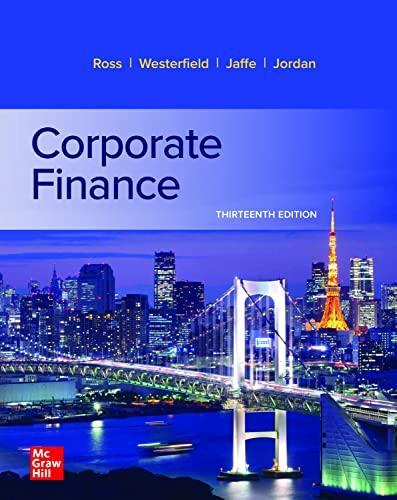You are an investor who just bought three newly issued bonds. These bonds have the same credit quality and 10 years to maturity. The following table summarizes the characteristics of your portfolio. Bond Face Value Coupon Rate A $1,000 0% B $1,000 3% $1,000 6% Bonds pay coupons annually and are currently priced to yield 3.0% per annum. Your tax bracket is 30% on ordinary income and 20% on capital gains. a) What is the price of each bond today (t = 0)? [3 marks] b) Consider three different scenarios for the TYM next year (t = 1): 2.7%, 3.0% and 3.3%. i. What are the bond prices in each scenario? [3 marks] il. Assume you liquidate your entire portfolio in one year, what would be your rate of return for each bond before taxes? [3 marks] ill. Assume you liquidate your entire portfolio in one year, what would be your rate of return for each bond after taxes? [3 marks) c) For each bond, explain why its price changes when the YTM remains unchanged at 3% from t = 0 tot = 1? (Hint: Explain in terms of mechanical price changes for discount, par and premium bonds) [3 marks) d) Based on your answers to part (b), are different bonds more attractive (on an after-tax basis) depending on the expected YTM in the future? Why? [2 marks] e) Assume that the issuer of Bond A is the government of Canada. Will the quoted YTM and the realized HPR at maturity (expressed as an EAR) be equal for this bond? Why? [2 marks] f) Now, assume that 7 years have elapsed. Bond B sells for $945.54 and it has 3 years left to maturity. Immediately after the coupon is paid, an investor purchases the bond and holds it to maturity. The investor reinvests the two remaining coupons at the following rates (1,2) = 3% and r(2,3) = 2%, where r(t.t + 1) is the effective annual rate from year to year t + 1. Calculate the YTM (expressed as an EAR). [2 marks] ii. Calculate the realized compound yield (expressed as an EAR) for this investor [2 marks] You are an investor who just bought three newly issued bonds. These bonds have the same credit quality and 10 years to maturity. The following table summarizes the characteristics of your portfolio. Bond Face Value Coupon Rate A $1,000 0% B $1,000 3% $1,000 6% Bonds pay coupons annually and are currently priced to yield 3.0% per annum. Your tax bracket is 30% on ordinary income and 20% on capital gains. a) What is the price of each bond today (t = 0)? [3 marks] b) Consider three different scenarios for the TYM next year (t = 1): 2.7%, 3.0% and 3.3%. i. What are the bond prices in each scenario? [3 marks] il. Assume you liquidate your entire portfolio in one year, what would be your rate of return for each bond before taxes? [3 marks] ill. Assume you liquidate your entire portfolio in one year, what would be your rate of return for each bond after taxes? [3 marks) c) For each bond, explain why its price changes when the YTM remains unchanged at 3% from t = 0 tot = 1? (Hint: Explain in terms of mechanical price changes for discount, par and premium bonds) [3 marks) d) Based on your answers to part (b), are different bonds more attractive (on an after-tax basis) depending on the expected YTM in the future? Why? [2 marks] e) Assume that the issuer of Bond A is the government of Canada. Will the quoted YTM and the realized HPR at maturity (expressed as an EAR) be equal for this bond? Why? [2 marks] f) Now, assume that 7 years have elapsed. Bond B sells for $945.54 and it has 3 years left to maturity. Immediately after the coupon is paid, an investor purchases the bond and holds it to maturity. The investor reinvests the two remaining coupons at the following rates (1,2) = 3% and r(2,3) = 2%, where r(t.t + 1) is the effective annual rate from year to year t + 1. Calculate the YTM (expressed as an EAR). [2 marks] ii. Calculate the realized compound yield (expressed as an EAR) for this investor [2 marks]







